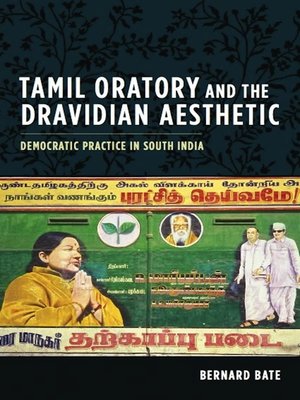Tamil Oratory and the Dravidian Aesthetic
ebook ∣ Democratic Practice in South India · Cultures of History
By Bernard Bate

Sign up to save your library
With an OverDrive account, you can save your favorite libraries for at-a-glance information about availability. Find out more about OverDrive accounts.
Find this title in Libby, the library reading app by OverDrive.



Search for a digital library with this title
Title found at these libraries:
| Loading... |
This is a book about the newness of old things. It concerns an oratorical revolution, a transformation of oratorical style linked to larger transformations in society at large. It explores the aesthetics of Tamil oratory and its vital relationship to one of the key institutions of modern society: democracy. Therefore this book also bears on the centrality of language to the modern human condition.
Though Tamil oratory is a relatively new practice in south India, the Dravidian (or Tamil nationalist) style employs archaic forms of Tamil that suggest an ancient mode of speech. Beginning with the advent of mass democratic politics in the 1940s, a new generation of politician adopted this style, known as "fine," or "beautiful Tamil" (centamil), for its distinct literary virtuosity, poesy, and alluring evocation of a pure Tamil past.
Bernard Bate explores the centamil phenomenon, arguing that the genre's spectacular literacy and use of ceremonial procession, urban political ritual, and posters, praise poetry are critical components in the production of a singularly Tamil mode of political modernity: a Dravidian neoclassicism. From his perspective, the centamil revolution and Dravidian neoclassicism suggest that modernity is not the mere successor of tradition but the production of tradition, and that this production is a primary modality of modernity, a new newness-albeit a newness of old things.






